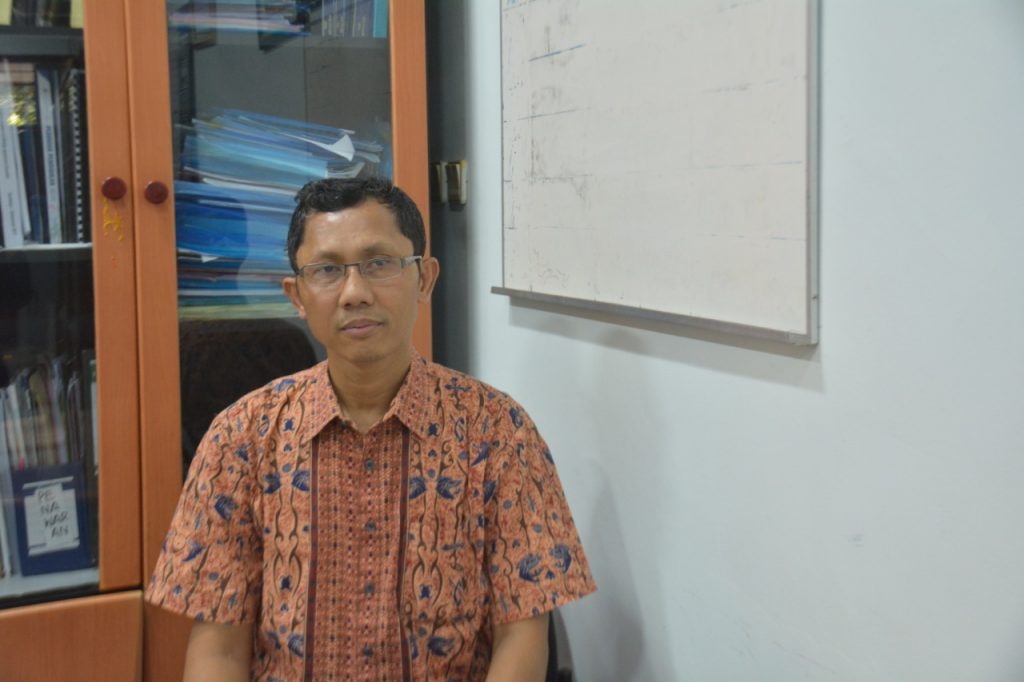UNAIR NEWS – Indonesia is a country rich in natural resources, especially oil. Oil is used for fuel both in industry and transportation. However, oil wealth in Indonesia began to decline from year to year.
The government plans to allocate fossil fuel energy subsidies by reducing them and using renewable energy resources with a focus on biodiesel development. Regarding this issue, Prof. Dr. Purkan, S.Si., M.Si., Professor of Chemistry at Faculty of Science and Technology (FST) Universitas Airlangga (UNAIR) conducted a study on microalgae for renewable biodiesel development.
The microalgae were chosen as ingredients for biodiesel for some reasons. They are photosynthetic microorganisms that can develop rapidly in water. Furthermore, microalgae contain lipids and only need carbon dioxide (CO 2) and water (H2O) to develop.
“Indonesia is well-known as a water country, making it possible to be used for microalgae breeding media. At present, microalgae are not used well, “explained Prof. Purkan.
“In fact, microalgae can be easily cultivated to obtain cell biomass as a source of lipid extract or used directly for biodiesel production,” he stated at the Department of Chemistry, FST UNAIR.
Types of microalgae used
In the study, there were two types of Indonesian microalgae strains used, Nannochloropsis oculata and chlorella vulgaris. Uniquely, both have the same main growth component but differ in the type of micronutrients (trace elements).
“Nannochloropsis oculata requires more trace element than Chlorella vulgaris. Growth of Chlorella vulgaris is easier, “he said.
How to make biodiesel
Prof. Purkan said that within a period of six months, the research gained results. It was from conducting two ways, in-situ and ex-situ. For in-situ method, he continued, microalgae cells dried beforehand were given methanol and catalysts and then given treatment and form biodiesel.
As for the ex-situ method, the microalgae dried cells’ lipids were extracted first to get oil. The oil then is converted into biodiesel through the addition of methanol and catalyst. Both methods used high pure methanol to avoid any mixture of water affecting the results.
There are several types of catalysts for biodiesel formation: acids, bases, and nano particles. The choice of catalyst is adjusted to the nature and type of microalgae sample used.
From this research it was found that microalgae cells given treatments with nano particle catalysts produced higher results. Furthermore, the in-situ process is also higher and even faster. For Prof. Purkan, the ex-situ method was less efficient compared to the in-situ method because the ex-situ method has long stages with few results.
Prof. Purkan explained that the research currently being developed is only on enhancing biodiesel products, and determining the components and types of biodiesel. Development for the electrolytic test will be done in the future.

His focus now is increasing the catalyst development so the biodiesel result is higher. And, the most important thing is using potential natural biodiversity that has not been utilized.
Prof. Purkan hoped that in the future there will be centers that can improve the use of biodiesel in collaboration with research centers or production centers managed directly by the government, so the biodiesel exploration from microalgae can be done and applied. (*)
Author: Asthesia Dhea Cantika
Editor: Binti Q. Masruroh





